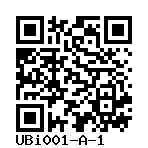UBi001-A-1
General
Cell Line |
|
| hPSCreg name | UBi001-A-1 |
| Cite as: | UBi001-A-1 (RRID:CVCL_YM95) |
| Cell line type | Human induced pluripotent stem cell (hiPSC) |
| Similar lines | |
| Last update | 30th October 2019 |
| User feedback | |
Provider |
|
| Generator | University of Barcelona (UB) |
External Databases |
|
| BioSamples | SAMEA6286047 |
| Cellosaurus | CVCL_YM95 |
| Wikidata | Q98133808 |
General Information |
|
| Publications | |
| * Is the cell line readily obtainable for third parties? |
No |
| Subclone of | |
Donor Information
General Donor Information |
|
| Sex | male |
Phenotype and Disease related information (Donor) |
|
| Diseases | No disease was diagnosed.
|
Karyotyping (Donor) |
|
| Has the donor karyotype been analysed? |
Yes
Karyotyping method:
G-Banding
|
External Databases (Donor) |
|
| BioSamples | SAMEA6298140 |
Ethics
Also have a look at the ethics information for the parental line
UBi001-A
.
| Is there an MTA available for the cell line? | No |
| For generation of the cell line, who was the supplier of any recombined DNA vectors or commercial kits used? | Thermo Fisher Scientific |
| Are you aware of any constraints on the use or distribution of the cell line from the owner or any parties identified in the query above? | No |
hIPSC Derivation
General |
|
|
The source cell information can be found in the parental cell line
UBi001-A.
|
|
Reprogramming method |
|
| Vector type | None |
Vector free reprogramming |
|
Other |
|
| Derived under xeno-free conditions |
Unknown |
| Derived under GMP? |
Unknown |
| Available as clinical grade? |
Unknown |
Culture Conditions
| Medium |
mTeSR™ 1
|
Characterisation
No characterisation data could be found for this subclone. Please open parental cell line UBi001-A .Genotyping
Karyotyping (Cell Line) |
|
| Has the cell line karyotype been analysed? |
Yes
46, XY
Karyotyping method:
G-Banding
|
Other Genotyping (Cell Line) |
|
Genetic Modification
| Disease/phenotype related modifications |
|


Login to share your feedback, experiences or results with the research community.